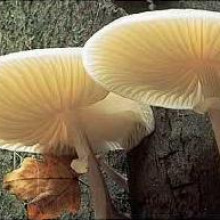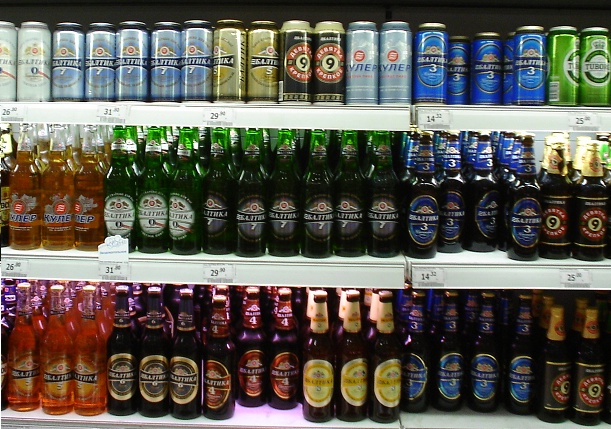In this week's Naked Scientists' News Flash - How a rock commonly found in the Earth's crust can capture carbon, forest fungi surprise scientists by releasing less carbon dioxide when the environment gets hotter. Also, we discover a genetic pre-disposition to alcoholism in mice and nano-scale solar panels!
In this episode

Rock-steady way to tackle rising Carbon Dioxide
Barrack Obama has famously pledged to put the US at the forefront of global warming (cynics would say it already is!), so it's fitting that a US scientist has this week developed a strategy that could lock away literally billions of tonnes of CO2 per year.
 Writing in this week's PNAS, Columbia University geologist Peter Keleman explains how it should be possible to use the same mechanism that has controlled CO2 levels on Earth for billions of years to cut greenhouse gases today.
Writing in this week's PNAS, Columbia University geologist Peter Keleman explains how it should be possible to use the same mechanism that has controlled CO2 levels on Earth for billions of years to cut greenhouse gases today.
His approach revolves around one of the most abundant minerals on the planet called olivine, which is a form of magnesium silicate. At the Earth's surface this chemical readily reacts with carbon dioxide and water to form magnesium carbonate (called magnesite) and quartz (silica), thus locking the CO2 away as rock. Keleman has shown that CO2 warmed to about 30 degrees Celsius and pumped into seams of olivine rapidly kickstarts the chemical reaction, which itself produces heat, accelerating the process further.
"Our data suggests that about 4 billion tonnes of CO2 per cubic kilometre of rock involved in the process could be locked away with this process," Keleman explains, "and given that we currently produce about 30 billions tonnes per year, and Richard Branson has offered a substantial cash prize to anyone who can lock away 1 billion tonnes of CO2, we're definitely in the right ball park."
The good news is that wherever there are mountains there are rich deposits of olivine, and some countries are extremely well endowed with the mineral including the Balkans, Saudi Arabia, the United Arab Emirates and Papua New Guinea. So is Keleman suggesting we need to ship our waste CO2 to these places? Not quite; in this instance Mohammed will have to come to the mountain.
"I think in the future we'll see a migration of CO2-producing industries and electricity-generating facilities to areas with the capacity to lock away CO2 using technqies like this."

A fungal solution to climate change?
The fight against future climate change may have an unexpected ally, in the form of mushrooms living on the soils of northern Spruce forests of Alaska, Canada and Scandinavia.
 Steven Allison and Kathleen Tresede from the University of California Irvine conducted experiments in Alaska and found that when temperature increases, fungi living on the forest floor dry out and emit less carbon dioxide, the opposite of what the researchers expected to find since colder climates are thought to slow down the processes by which fungi produce carbon dioxide.
Steven Allison and Kathleen Tresede from the University of California Irvine conducted experiments in Alaska and found that when temperature increases, fungi living on the forest floor dry out and emit less carbon dioxide, the opposite of what the researchers expected to find since colder climates are thought to slow down the processes by which fungi produce carbon dioxide.
The study, published in the journal Global Change Biology this week, involved Allison and Tresede going out into the forests of Alaska and setting up several small greenhouses. At the start of the experiment - the beginning of the growing season in May - the scientists kept the conditions inside the greenhouses the same as in nearby control plots. Then, they closed the greenhouses and the temperature of the air went up by 5 degrees Celsius, while the temperature in the soil went up by 1 degree.
By carefully measuring the gases in all these experimental plots they found that by the end of the growing season in August, the amount of carbon dioxide produced by the soil in the greenhouse plots was around half of that produced in the unheated control plots.
Allison and Tresede found that there was about half as much fungi inside the heated greenhouses as in the unheated plots, indicating that when the temperature increases, much of the fungi die while some become inactive and stop producing as much carbon dioxide.
What we don't currently know is whether this change in carbon production will have a significant effect on the climate. Halving of the CO2 output with a 5 degrees increase in temperature certainly sounds like a major change. And this could be particularly important since northern forests are thought to lock away half of the world's soil carbon.
But of course we know very little about how the ecosystem as a whole might respond and adapt to increasing temperature over the longer term and what other changes might be triggered. Ecosystems are notoriously complex, unpredictable things.
There is also the possibility of knock-on effects of this reduction in fungal activity. The soil fungi are doing a really important job of breaking down dead organic matter like fallen leaves, so presumably, halving their numbers could well have an important effect on the functioning of the ecosystem.
While these findings certainly help us understand a little better what is going on and for once this is something that could help alleviate the problems of climate change rather than make them worse, but the picture is still not clear cut and this certainly won't mean the end of global warming.

Booze-prone brain behaviour
Scientists have uncovered a genetic reason why some people are prone to alcoholism.
 University of Massachusetts Medical School researcher Gilles Martin and his colleagues, writing in this week's PNAS, have found that one of the components of a pore (called the BK channel) found on the surfaces of brain cells can predispose to the rapid development of alcohol tolerance. This pore allows potassium to enter nerve cells, helping to damp down nerve excitability. But alcohol makes the pore remain open for longer than normal, reducing nerve activity and thus accounting for its depressant effects.
University of Massachusetts Medical School researcher Gilles Martin and his colleagues, writing in this week's PNAS, have found that one of the components of a pore (called the BK channel) found on the surfaces of brain cells can predispose to the rapid development of alcohol tolerance. This pore allows potassium to enter nerve cells, helping to damp down nerve excitability. But alcohol makes the pore remain open for longer than normal, reducing nerve activity and thus accounting for its depressant effects.
But in some people, despite the continued presence of alcohol, the channel quickly returns to its normal activity, which could urge the drinker to consume even more alcohol to maintain the intoxicating effect. Individuals who show this kind of nerve cell behaviour seem to be more prone to alcohol dependence, although scientists had no idea how it happens.
To find out Martin and his team first knocked out a gene called beta4, which codes for part of the BK channel targeted by alcohol. Tests on nerve cells in these animals showed that, compared with normal mice, the cells very quickly returned to normal after alcohol exposure. Putting the beta4 subunit back, on the other hand, made the channels recover much more slowly. So perhaps, suggests Martin, that individuals with a tendency to alcoholism might have mutations in their beta4 genes which affects the levels of the protein in their brains, or how it controls the BK channel activity in the presence of alcohol.
"This we need to find out," he says. "And then perhaps this will lead to tests that can enable doctors to spot people at risk of alcoholism, or perhaps the development of novel drugs to compensate for the altered channel activity which might reduce a person's risk."
The world’s smallest solar panels
The world's most minute solar panel cells have been built and tested and one day in the not too distant future they could be used to power even tinier microscopic machines.
![]() The solar panels were built by Xiaomei Jiang and her team of researchers from the University of South Florida in the States.
The solar panels were built by Xiaomei Jiang and her team of researchers from the University of South Florida in the States.
Their study published in the Journal of Renewable and Sustainable Energy describes how they built tiny solar panels about the size of a lower case o in 12 point font on a computer.
To make these tiny solar cells the researchers didn't simply take normal photovoltaic solar panels - the kind you might see on rooftops - and make them much smaller.
Regular solar panels are built on a brittle backing material made of silicon, similar to the sort of thing computer chips are built on. Instead, these tiny solar cells are based on an organic polymer that has the same properties as silicon, but that can be dissolved into a fluid and printed into a flexible backing material. Theoretically, this organic material could be sprayed on any surface that is exposed to sunlight.
Jiang and her team are developing these tiny panels with the hope that they will one day power a type of microscopic sensor that can be used for detecting dangerous chemicals and toxins.
These detectors are built from carbon nanotubes, the tiny cylinders of carbon that are 50 thousand times thinner than a human hair. The idea is that when the nanotubes are hooked up to a power source of around 15 volts, they can detect small amounts of particular chemicals by measuring the electrical changes that occur when chemicals enter the tubes; the exact change in charge is an indicator of what type of chemical is present.
So far, the team have put together an inch-long array of 20 of these tiny solar cells which has been enough to generate just 7.8 volts. The next step will be to optimize the cells so they produce enough power for the microscopic chemical detectors, which they think they will be able to do in the next generation of solar cells that should be ready by the end of the year.
Related Content
- Previous Wiping Away the Human Race
- Next National Pathology Week










Comments
Add a comment